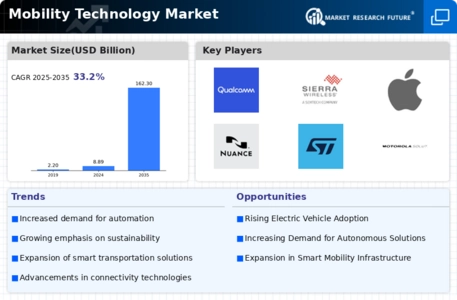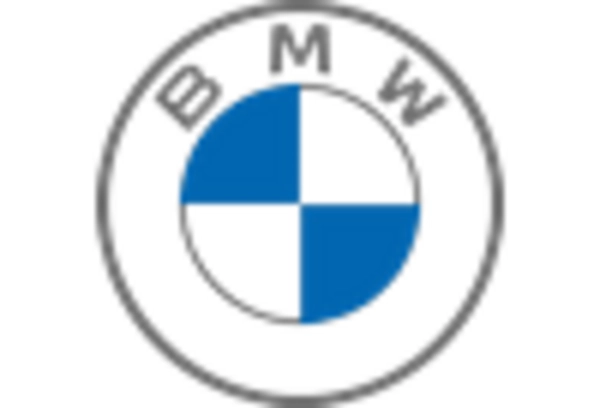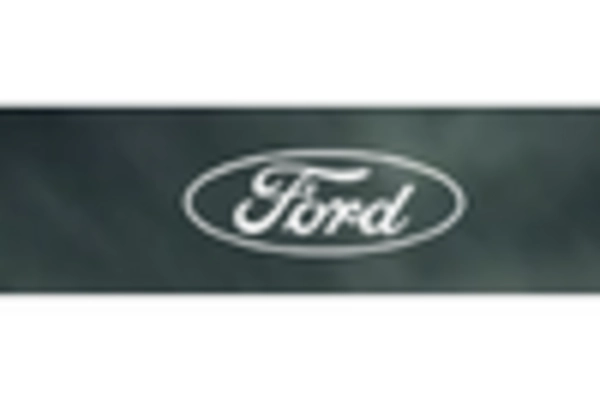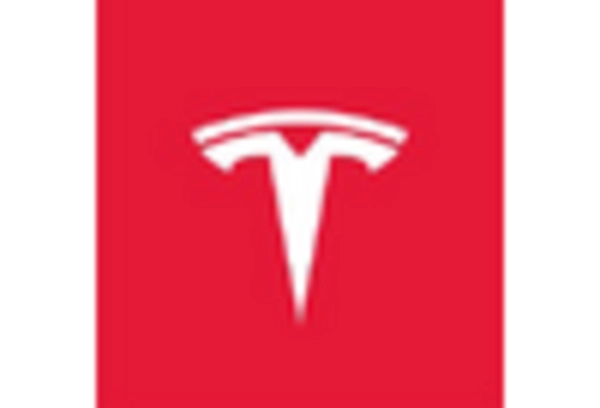Market Trends
Key Emerging Trends in the Mobility Technology Market
In the dynamic landscape of the Mobility Technology Market, companies deploy various market share positioning strategies to establish a competitive edge and capitalize on emerging trends. One prevalent approach involves differentiation, wherein companies seek to distinguish their products or services from competitors. This can be achieved through technological advancements, unique features, or superior user experiences. For instance, companies might focus on developing cutting-edge electric vehicles, incorporating advanced safety features, or enhancing connectivity options to appeal to a broader consumer base.
Another key strategy revolves around cost leadership, where companies strive to become the low-cost providers in the market. Achieving economies of scale through efficient production processes, resource optimization, and strategic partnerships enables companies to offer competitive prices. Cost leadership is particularly vital in the Mobility Technology Market as it can influence consumer decisions in a price-sensitive environment. Companies embracing this strategy often prioritize operational efficiency and cost-effective innovations to maintain a competitive pricing advantage.
Market segmentation is a strategic tool that allows companies to target specific customer segments with tailored products or services. In the Mobility Technology Market, segmentation can be based on factors such as demographic profiles, geographical locations, or specific mobility needs. By understanding the unique preferences and requirements of different consumer groups, companies can design targeted marketing campaigns and develop products that resonate with the specific needs of each segment. This approach enables companies to capture a significant market share within niche markets, fostering brand loyalty and customer satisfaction.
Strategic alliances and partnerships play a pivotal role in shaping market share within the Mobility Technology Market. Collaborations between companies can lead to shared resources, joint research and development efforts, and expanded market reach. For example, a technology company might partner with an automotive manufacturer to integrate their software into the vehicles, creating a mutually beneficial relationship that enhances the overall value proposition. Strategic alliances enable companies to leverage complementary strengths, access new markets, and jointly invest in innovation, ultimately influencing market share dynamics.
Innovation is a cornerstone of success in the Mobility Technology Market, and companies often adopt a first-mover strategy to gain a competitive advantage. Being the first to introduce groundbreaking technologies or disruptive solutions positions a company as an industry leader, attracting early adopters and establishing brand recognition. This strategy requires a commitment to continuous research and development, staying ahead of technological trends, and having the agility to adapt to evolving market demands. Companies that successfully implement a first-mover strategy can not only capture significant market share but also shape the trajectory of the industry.
In conclusion, the Mobility Technology Market is highly competitive, and companies employ diverse strategies to position themselves favorably and secure a substantial market share. Whether through differentiation, cost leadership, market segmentation, strategic alliances, or a focus on innovation, each approach reflects a nuanced understanding of market dynamics and consumer preferences. Successful companies often integrate a combination of these strategies, adapting to the ever-changing landscape of mobility technology to meet the demands of an evolving market.

















Leave a Comment